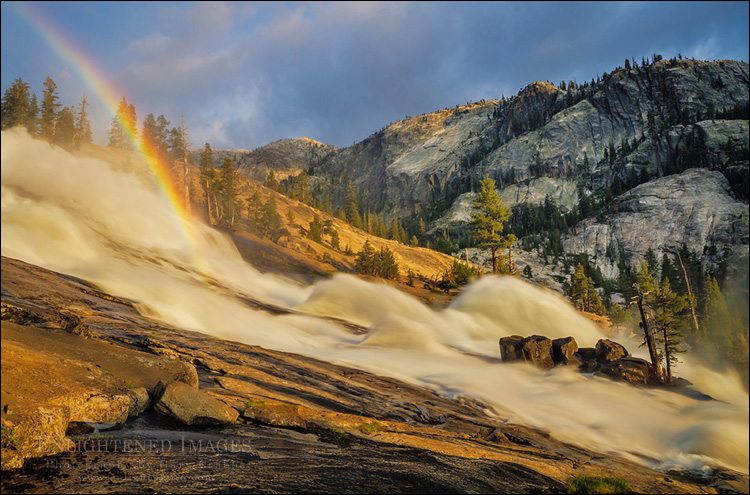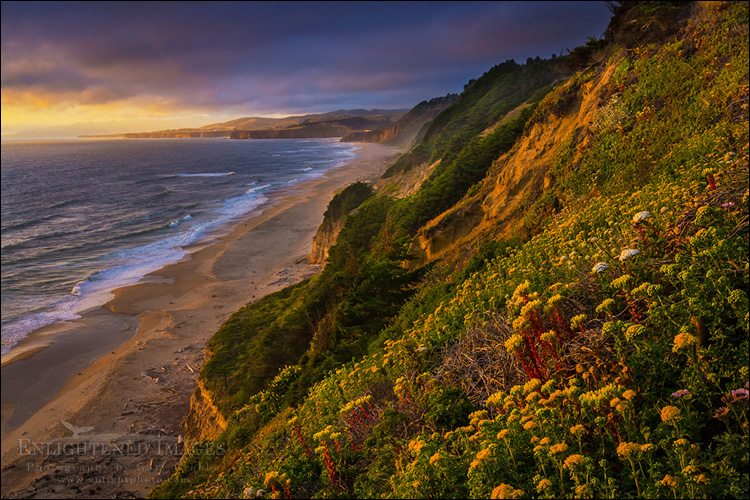
Picture: Waves breaking against lava rocks on the coast at The End of the World, North Kona District, Big Island, Hawaii
(Click here to purchase a print or license for use in publications. – 150526a_HI-0166)
Visiting The End of the World, at a place where the Hawaiian Gods died.
– Travels With a Camera.
Have you ever wondered what you’d see if you traveled to the End of the World? If you find yourself on the Big Island of Hawai’i, you’ll have a chance to find out. The End of the World can be found along the coast of the North Kona District at Maihi Bay. Unfortunately, for approximately 300 native Hawaiians, this place literally was the end of their world. They died in 1819 at the Kuamo’o Battle, which has also become known as “The Place Where the Hawaiian Gods Died.”
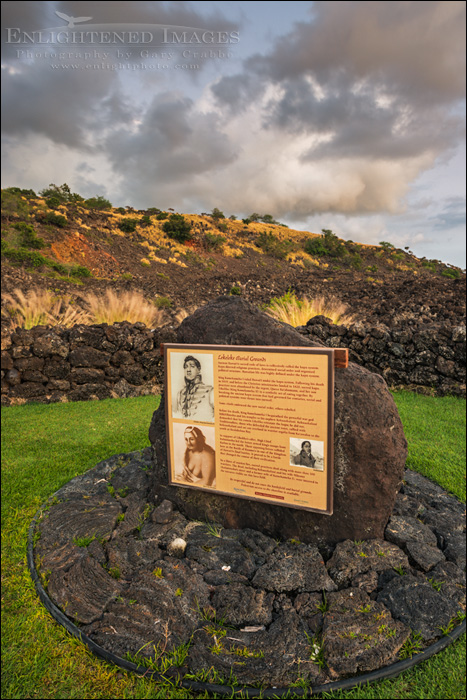 Picture: Memorial marker at the site of the Kuamo’o Battle (1819), at The End of the World, North Kona District, Big Island, Hawaii (Click here to purchase a print or license for use in publications. – 150526a_HI-0343)
Picture: Memorial marker at the site of the Kuamo’o Battle (1819), at The End of the World, North Kona District, Big Island, Hawaii (Click here to purchase a print or license for use in publications. – 150526a_HI-0343)
The historical significance of this site can be described as the Gettysburg of native Hawaiians. It was the final battle between supporters of the long-standing Kapu system of ancient moral and social laws which existed throughout the Hawaiian Islands, and reforms started by Liholiho, son of King Kamehameha I, and the king’s wife, Queen Ka’ahumanu. Within the Kapu system, the penalty for many small and more grievous infractions was death. Following the passing of King Kamehameha I in 1819, the two began the reform of abandoning the old Kapu system by daring to dine together. Prior to this, it was considered ‘kapu’ (forbidden) for men and women to eat together.
In what was literally like a family feud of those who fought on either side of the Mason-Dixon Line during the Civil War, Kamehameha’s nephew and Liholiho’s cousin, Kekuaokalani, and his wife, Manono, (who also happened to be a former wife of Kamehameha), gathered together a group warriors who wanted to maintain the the ancient Kapu sysetm. They came ready to fight against warriors gathered in support of Liholiho’s reforms, who were led into battle by the brother of Kekuaokalani’s wife, Manono. The Kuamo’o Battle, which occurred in December of 1819, was a decisive victory for Liholiho and the supporters of those who wanted to abolish the ancient Kapu ways. The story goes that during the battle, Kekuaokalani was mortally wounded. While his wife, Manono, was holding him, opposing soldiers approached. She looked to her husband, saying something along the lines of “Forever My Love,” and then reached to pick up his weapon, at which time she too was killed. With them died the old Kapu ways, and marked the passing of the Hawaiian gods. Within six months, Christian Missionaries began arriving in the Hawaiian Islands.
The bodies of the 300 warriors who died in the Kuamo’o Battle, including those of Kakuaokalani and Manono, remain at what is now known as the Lekeleke Graveyard. From the walkway at the base of the graveyard, you can see where stone cairn terraces built out of lava rocks lay along the hillside, marking where the bodies of the fallen warriors have been buried.
Pictures: Lekeleke Graveyard, site of the Kuamo’o Battle in 1819, The End of the World, Maihi Bay, North Kona District, Big Island, Hawaii

(Click here to purchase a print or license for use in publications. – 150526a_HI-0336)

(Click here to purchase a print or license for use in publications. – 150526a_HI-0278)
Today, the End of the World can be reached near the southern end of Ali’i Drive, approximately nine miles south of Kailua-Kona. The location sits next to modern-day resorts and golf courses, and is a popular place for people wanting to take short hikes along the rugged lava rock and tree-lined coast. This is also a great place see large ocean waves pounding against the shore in a turbulent, never-ending dance. Many locals and tourists have also come to know this place as a good spot for cliff diving. However, many native Hawaiians believe that because it’s a sacred place, it is considered disrespectful to frolic and jump off the rocks. That aspect notwithstanding, I can say from my own short visit here, that between the sharpness of the lava rocks and the pounding surf, jumping off the rocks into the ocean would not be high on my list of smart ideas. It is, however, a great location if you want to photograph the raw power of the ocean, where the large waves impact strongly against the rocky shoreline, sending massive columns of whitewater spray shooting skyward. The setting sun on the western horizon adds a beautiful sense of warmth to this location, which stands in stark contrast to a place whose history is bathed by the cold pale of bloodshed, and the spirits forever locked into the adjacent hillside.
Pictures: The End of the World, Maihi Bay, North Kona District, Big Island, Hawaii
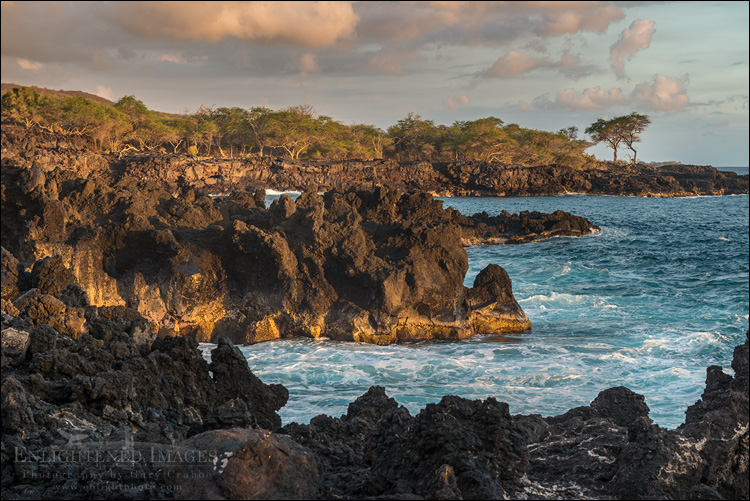
(Click here to purchase a print or license for use in publications. – 150526a_HI-0255)
–

(Click here to purchase a print or license for use in publications. – 150526a_HI-0185)
–
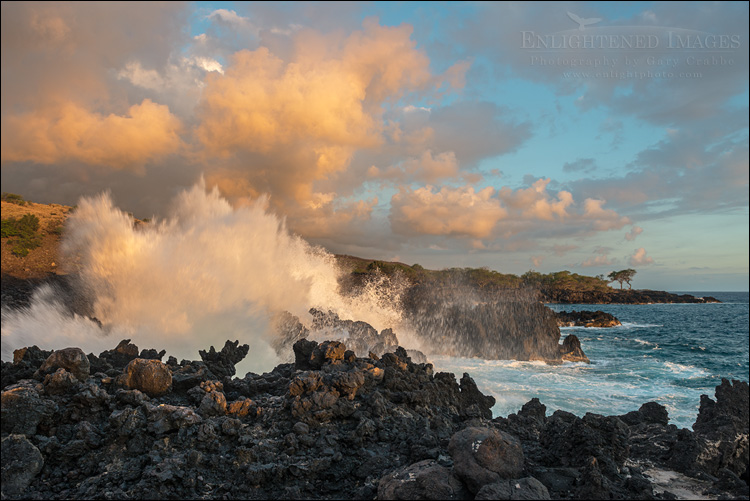
(Click here to purchase a print or license for use in publications. – 150526a_HI-0263)
–

(Click here to purchase a print or license for use in publications. – 150526a_HI-0282)
–
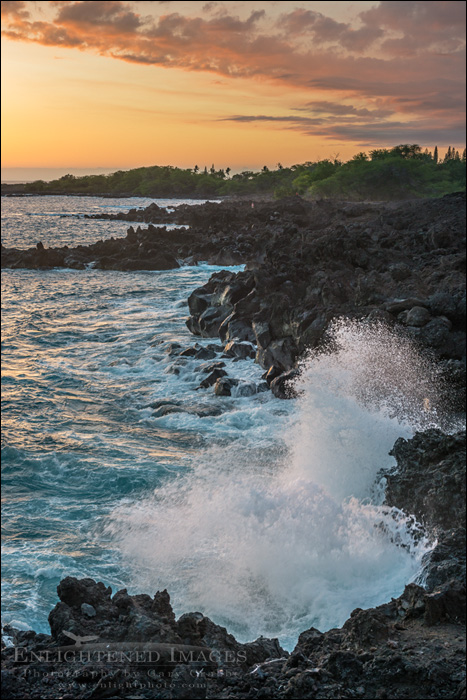
(Click here to purchase a print or license for use in publications. – 150526a_HI-0308)
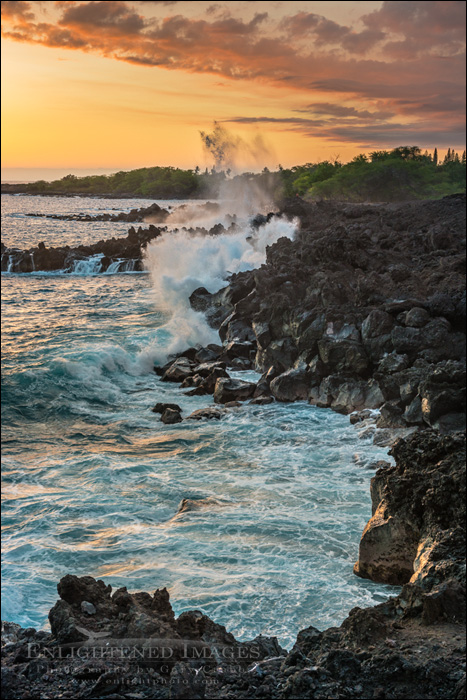
(Click here to purchase a print or license for use in publications. – 150526a_HI-0311)
—
![]()
If you like this post , I would greatly appreciate it if you’d consider sharing this with your friends using one of the Social Media sharing buttons located at the top of this post. You can also sign up to receive free updates by email when future posts are made to this blog.
—
Gary Crabbe is an award-winning commercial and editorial outdoor travel photographer and author based out of the San Francisco Bay Area, California. He has seven published books on California to his credit, including “Photographing California; v1-North”, which won the prestigious 2013 IBPA Benjamin Franklin Gold Medal award as Best Regional title. His client and publication credits include the National Geographic Society, the New York Times, Forbes Magazine, TIME, The North Face, Subaru, L.L. Bean, Victoria’s Secret, Sunset Magazine, The Nature Conservancy, and many more. Gary is also a photography instructor and consultant, offering both public and private photo workshops. He also works occasionally a professional freelance Photo Editor.

